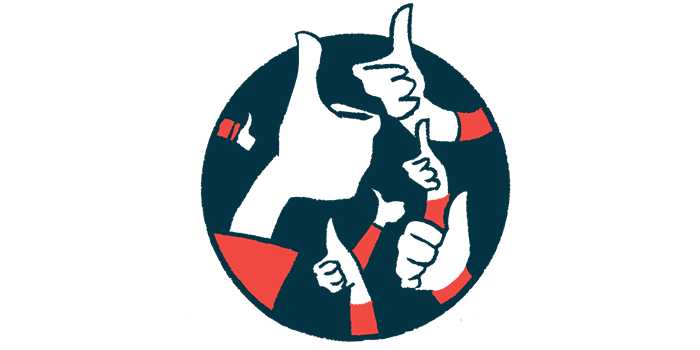Enrollment Complete in Phase 1/2 Trial of Batten-1 for CLN3 Disease
Theranexus, BBDF now advancing miglustat alone for juvenile Batten disease
Written by |

Theranexus and the Beyond Batten Disease Foundation (BBDF) have completed enrollment for a Phase 1/2 clinical trial testing Batten-1 — the partners’ revamped experimental therapy, solely containing miglustat — in adolescents and adults with juvenile Batten disease.
This is “an important milestone in the development of Batten-1, a drug candidate that aims to significantly slow progression of juvenile Batten disease for which there is currently no available treatment,” Franck Mouthon, Theranexus‘ co-founder, CEO, and chairman of board of directors, said in a joint press release.
“Our goal for the next stages in the development process is to launch an international pivotal Phase II/III trial in 2023,” Mouthon added.
The most common form of Batten disease, juvenile Batten — also called CLN3 disease — is caused by a mutation in the CLN3 gene. This leads to the buildup of waste products, most notably a fatty molecule called lipofuscin, inside lysosomes, which are the recycling compartments of cells.
The toxic accumulation of these fatty molecules results in nerve cell damage and death, which ultimately causes vision loss, progressive motor and cognitive decline, and seizures in juvenile Batten disease patients.
BBDF and Theranexus had been jointly developing a combination therapy called BBDF-101 for juvenile Batten. That therapy combined two components — trehalose and miglustat — that had the potential to prevent or lessen this toxic buildup of waste products.
Trehalose is a natural sugar molecule used in some artificial sweeteners that was shown to promote the disposal of cellular waste products.
Miglustat, meanwhile, works by partially blocking the production of the fatty molecules that build up to toxic levels in Batten and other disorders. It is sold by Actelion under the brand name Zavesca as a treatment for type 1 Gaucher disease, which also is caused by the toxic buildup of molecules in lysosomes.
Moving forward with miglustat
New preclinical data on BBDF-101’s components led the partners earlier this year to change course regarding the therapy’s development. That data showed the potentially superior efficacy of miglustat for Batten disease.
The partners now are advancing the development of miglustat alone — renamed as Batten-1.
The Phase 1/2 trial (NCT05174039), which started recruitment in February, is assessing the tolerability and pharmacokinetics of escalating doses of Batten-1. Pharmacokinetics refers to a medication’s movement into, through, and out of the body.
The trial intends to deliver miglustat, as an oral capsule, to six juvenile Batten disease patients, ages 17 and older, for two years.
The study, funded by an exclusive $20 million global agreement between Theranexus and BBDF, is already underway. It’s being conducted at referral centers for Batten disease in the U.S. under the leadership of Gary Clark, MD, chief of child neurology at Texas Children’s Hospital, in Houston.
Actelion is providing miglustat for current and future clinical trials of Batten-1, as well as for a subsequent extended access program (EAP), under the terms of an agreement reached last year between the company and BBDF. EAPs allow patients to gain access to experimental therapies deemed safe before their approval.
Data from the first nine weeks of treatment will be used to support the initiation of a Phase 2/3 trial that will test a liquid formulation of Batten-1, which the partners say is better suited for children.
According to Theranexus, the new trial, expected to start next year, will enroll up to 60 juvenile Batten patients at sites in the U.S. and Europe. It will include an ongoing assessment of Batten-1’s effects compared with the disease’s natural progression.
Should results be positive, the partners expect to use them to submit applications to regulatory authorities seeking the approval of Batten-1 for juvenile Batten.
“As parents and representatives of patients with juvenile Batten disease and their families, we are delighted with the enrollment of the last patient in the Phase I/II trial,” said Craig Benson, chair of the BBDF.
“This new Batten-1 treatment offers tremendous hope for our children affected by the disease,” Benson added.





